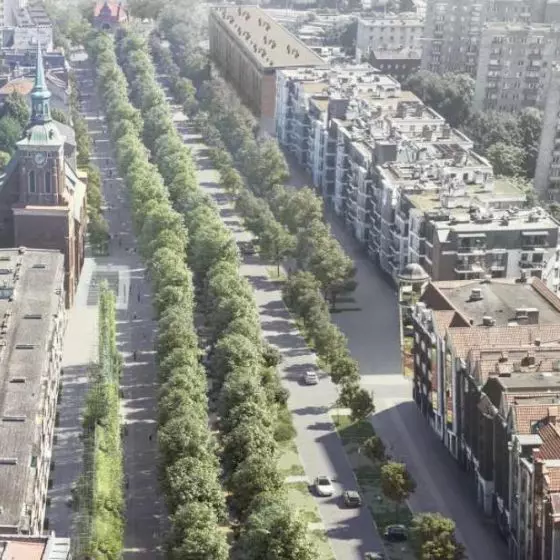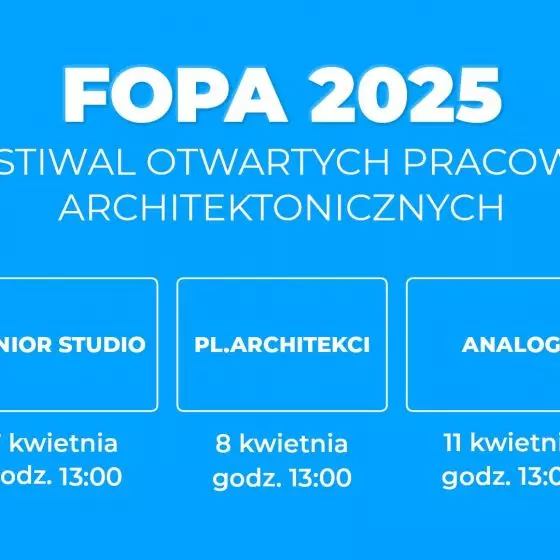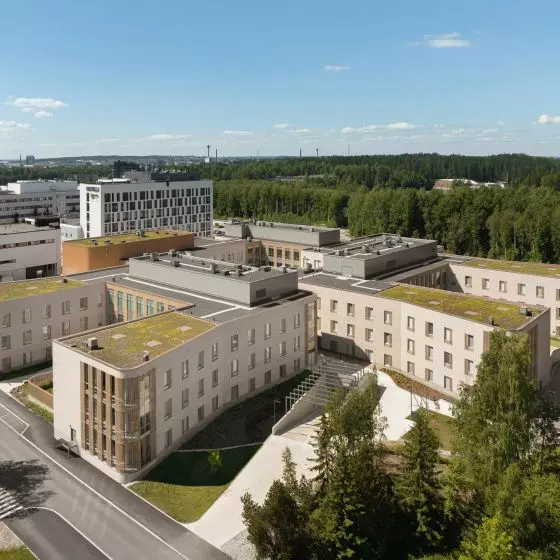Anna: Well, that's right. Architecture is inextricably linked to social roles that come from the same tradition as trained architects. Do you see changes both in the thinking about these roles and in the construction of the roles themselves?
Ewelina: In my opinion, attitudes and thinking about social roles are changing. I hope that this generation, which is now growing, will influence the construction of the roles themselves. Observing myself, my own child and other parents, I see that there is a chance for this. The division between girl princesses and boy heroes can be erased.
Anna: And what are you fighting for?
Ewelina: That's exactly what it's about. About blurring gender divisions in business. It's about us being able to function in the profession with the same rights as men. So that in design work our perspective on space, which is undoubtedly different, is taken into account. This will certainly bring a lot of good, including for men. This is what we are fighting for. To make sure we understand each other - we are about fighting through education. It's a fight to see that gender diversity is an added value.
{Image@url=https://cdn.architekturaibiznes.pl/upload/galerie/56292/images/original/aa22b8026f8ec10f4feb42a9c35d692d.jpg,alt="Where is Tiffany" - installation in the abandoned St. Stephen's Church in Chicago,title="Where is Tiffany" - installation in the abandoned St. Stephen's Church in Chicago}
"Where is Tiffany" - installation in the abandoned St. Stephen's Church in Chicago, Chicago Architecture Biennial,
proj.: Ewelina Jaskulska, cooperation: Agnieszka Słowik-Wesołowska
vision: Szymon Buzuk
Anna: This, it seems, requires a disenchantment of history. Let's start with the language. Architects or architectural women?
Ewelina: We know that femininity was seen as a weakness. Women, in order to break through, often had to become more masculine than men. We know from history examples of women who bonded with male architects and thus had the opportunity to design. Often the official assistants to the "master" architect turned out years later to be the authors of their works. Architect until World War II was the term for a woman involved in architecture. The communist years introduced the form "Mrs. Architect," stripping some of the identity of the female architect. The feminine ending is a sign that a woman has entered the profession. In the same way that masculine forms were created when a man entered a profession, such as teacher or nurse. Feminatives in the Polish language existed, but for years they were not used. This is purely a matter of habit. In Poland, when the first women officially entered the architectural profession, they were referred to by men as female architects.
Anna: Hence the name of your project, which you are implementing together with the Katarzyna Kozyra Foundation.
Ewelina: We thought about the name for a long time. We decided on "Architectonesses" to refer to history and give a new meaning to the term. We want to show the whole story, draw attention to the role of language, prove that there is a place for the other gender in architecture. We want to strive for equal opportunities for women in the profession, equal history, and gender balance in space. We want to have the same influence on urban development as men. There must be room for everyone, at all stages of the design process. This is what the "Architectural Women" project is all about, asking the question through activities on different levels: what would a world designed by women look like?
Anna: Do you have a thesis?
Ewelina: I think I will know the answer to this question in about two years [laughs].
Anna: What is the hypothesis?
Ewelina: We think the world would be more empathetic, more pro-social and safer. It would be an equal space and for everyone. An example would be changing parts of Barcelona or Vienna. Perhaps local communities that are extinct today would start functioning again? We have led man to be a slave to economics, as can be seen during the pandemic. Capitalism doesn't pass the test. We want to counter it with feminist concern as an opportunity to find a balance. Considering the world's social, economic and environmental problems, we believe that the feminist model will be a good solution because it is more human-centered.
{Image@url=https://cdn.architekturaibiznes.pl/upload/galerie/56306/images/original/8945074ce0fb2b88568585ec13abbaf9.jpg,alt=Madame Architect - art installations on women in architecture, designed by Ewelina Jaskulska, Joanna Aleksandrowicz,title=Madame Architect - art installations on women in architecture, designed by Ewelina Jaskulska, Joanna Aleksandrowicz}
Madame Architect - art installations on women in architecture, proj.: Ewelina Jaskulska, Joanna Aleksandrowicz
© Ewelina Jaskulska, Joanna Aleksandrowicz
Anna: This is going to be a provocation - do you want to say that there are no empathetic men and money-hungry women?
Ewelina: There are. We use a certain simplification, we generalize. It seems to me that otherwise it is difficult to present a problem that undoubtedly exists. Of course, there are exceptions to every statement I make. There are investors for whom the fact that I am a woman is not an obstacle, and sometimes even a value. There are women who don't have such experiences, and men who don't design solely with themselves in mind, and so on.
Anna: And how important a factor is ego?
Ewelina: Hugely important. It can be said that the goal of architects more than once was to build iconic buildings.
Anna: The idea was to create something the world hadn't seen before?
Ewelina: Exactly. Again, generalizing a bit, but the categories of utility, common good, human values were not important, only to create a monument and make history. The era of starchitects is coming to an end. I also think that now, with the development of the post-growth trend, design is less appealing to men by which, perhaps, they exclude themselves a bit [laughs].
Anna: Why?
Ewelina: Because this trend is about paying attention to existing elements and renovating, revitalizing, refurbishingthem ,instead of creating from scrat ch. In my opinion ,a woman will do well both as a creator and as a restorer. Aman not necessarily. Generalizing [laughs].



Madame Architect - art installations on women in architecture, proj.: Ewelina Jaskulska, Joanna Aleksandrowicz
© Ewelina Jaskulska, Joanna Aleksandrowicz
Anna: Do you think men might be afraid of women? They may feel threatened or otherwise that their order will be disrupted?
Ewelina: I think so. I think the worst thing could be the disruption of their order. I think they are afraid of taking away some kind ofdecision-making and then power. It seems to me that this unsettles the value system they have defined forthemselves . What's interesting is that men, when they hear about the"Architectonics" project, say, "Oh, you want to create 'Sexmission'?" They forget that it was created by a man, and this is again a man's idea of a world created by women.
Anna: And taking the aesthetic category, literally, what would this world look like?
Ewelina: For me, aesthetics is a result of themore important elements of the whole designpuzzle .
Anna: Tell us, please, how did the collaboration with the Foundation come about?
Ewelina: With the growth of our office, and theconsequent interest in the topic of women in architecture, I felt the need to try to change the system. I began to approach various institutions. I have no experience in organizing cultural, social and research events. I knew Ineeded support, including institutional support. I was bouncing off many doors. Thanks to a meeting with Katarzyna Kozyra and a few hours of conversation over coffee and good soup, these doors were opened by her Foundation, which also has unique experience in the subject of equalizing opportunities for women in the field of culture and art. Here, one can cite, for example , the Foundation'sstudy and report "Margin of Opportunity for Advancement? Report of a study on the presence of women in art universities" from 2015 . From this study we learn, among other things,that on average 70 percent of the students at these universities are women, while 35 percent of the total staff are women, ofwhich only about 20 percent are womenwith professorial degrees, and more than 50 percent are female assistants. The report diagnoses the reasons for this state of affairs. Inpolytechnics , on theother hand, there are about 50 percent female students inarchitecture departments , but only 40 percent of those in the profession are women, and it is not known what percentage of them run their own architectural offices. In my experience, very few.
Anna: Where do you start with your work?
Ewelina: Our idea met with approval and full support from the Foundation, which undertook theproject. Even before the pandemic, we started a series of intimate seminars at the Foundation's headquarters tooutline the course of action. Now, unfortunately, we have to change the form of work due to theepidemiological situation. We are thinking together about how to present the topic and express what we want to say. We are keen not toportray women as victims. We want to focus on showing that women are a value that ismissing, and should be added. In the "Architectural Women" project, we will prove that there is room for gender diversity that can make a space better. Together with Dr. Dorota Jedruch and Hanna Skąpska, we are now working on an exhibition by Iwona Buczkowska, which will be the first project carried out as part of "Architektoniczki".
{Image@url=https://cdn.architekturaibiznes.pl/upload/galerie/56284/images/original/427e1d6aa6589b3e2425c82360700287.jpg,alt=osiedle Le Blanc-Mesnil, 1986-1996, design: Iwona Buczkowska,title=Le Blanc-Mesnil estate, 1986-1996, design: Iwona Buczkowska}
Le Blanc-Mesnil estate, 1986-1996, proj.: Iwona Buczkowska
© Iwona Buczkowska
Anna: So it will be a complex and multi-phase project?
Ewelina: Yes. We start with research work on Iwona Buczkowska's realizations in France. We will analyze the impact of her architecture on people, on the development of communities, and touch on the topic of architecture in process. Here we are less interested in the creative process, more in what happens to the space over the years of its functioning. We also plan educational activities on various levels .



from left: Monika Nalewajk, Katarzyna Kozyra, Ewelina Jaskulska, Joanna Aleksandrowicz at the headquarters of the Katarzyna Kozyra Foundation
Photo: Katarzyna Szumska, courtesy of Ewelina Jaskulska
Anna: What do you want this project to end with?
Ewelina: My dream is to create amanifesto that would be a theoretical guideline for designing a space that takes into account both perspectives. The Architectonics project and all the activities that we will carry out with the Foundation will authenticate thewords in our manifesto, and maybe through this we will make our contribution to these changes.
Anna: Thank you for the interview.
interviewed: Anna WALEWSKA
Illustrations provided courtesy of Ewelina Jaskulska.






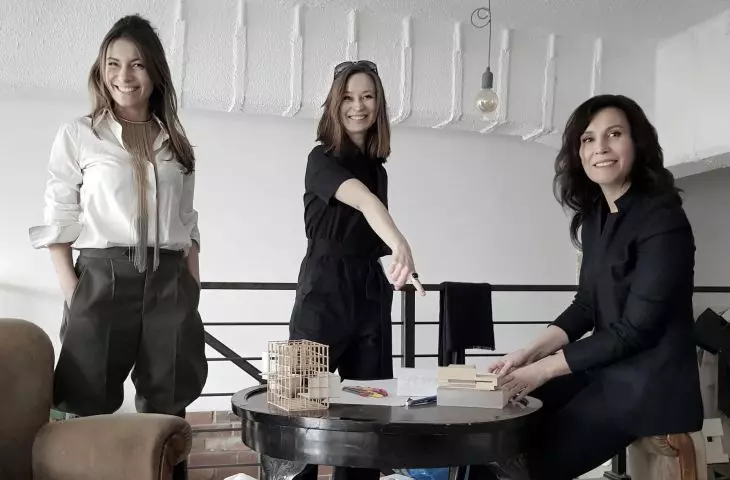





































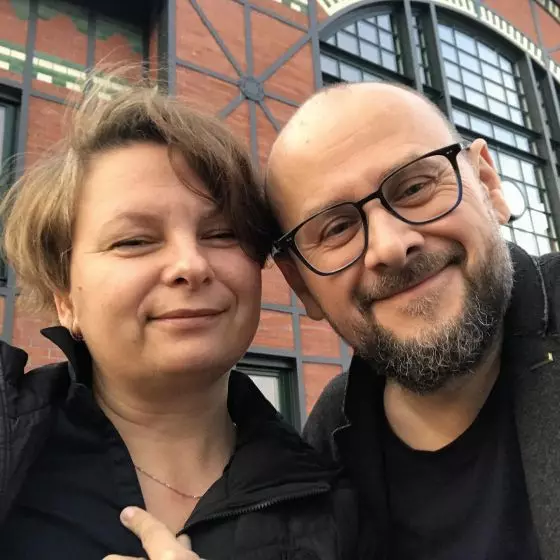
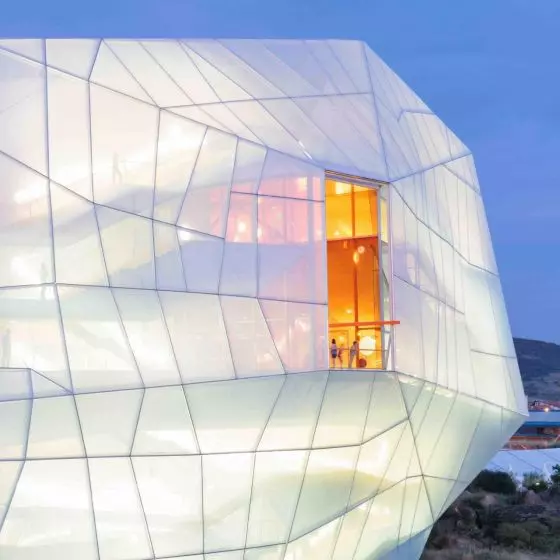
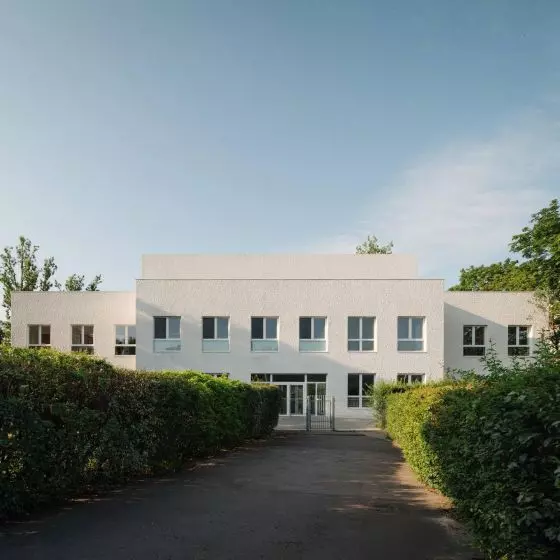
![Ricardo Scofidio [1935–2025]](https://cdn.architekturaibiznes.pl/upload/cms_aktualnosci/38432/images/kadr19/fit/560x560/ricardo-scofidio-457434.jpg)

